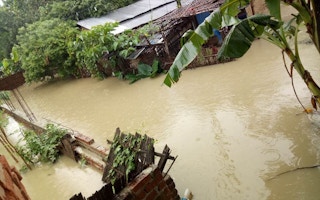More than two in three cities around the world already are noticing the effects of climate change, from more heatwaves to worsening flooding, but few have effective plans in place to deal with the threats, researchers warned Tuesday.
Budget restrictions are a key reason cities say they are failing to act, particularly on serious long-term threats such as surging demand on public health systems as a shifting climate brings more heat risks and new disease threats, they said.
“The scientific fact is that all cities are going to be affected in a severe way in the long term by climate change,” said Kyra Appleby, global director of cities, states and regions for CDP, a charity that runs a global disclosure project on environmental risks.
Last year, 530 cities around the world—home to 517 million people—reported on the climate hazards they face to the London-based CDP.
Just under half said they had done a vulnerability assessment on their climate risks—but those who had were almost six times more likely to have taken actions to prepare their infrastructure, services or people for the risks, the report said.
“
The scientific fact is that all cities are going to be affected in a severe way in the long term by climate change.
Kyra Appleby, global director of cities, states and regions, CDP
“Infrastructure that they are building now is going to be used for hundreds of years,” Appleby told the Thomson Reuters Foundation.
“So if they are not considering the long-term effects of climate change, they may not adequately be preparing their city for what the future will look like,” she said.
Some cities are already taking significant steps to address climate risks.
London, which fears it may by 2050 see significant water shortages, has started a long-term water security strategy that includes testing incentives to reduce demand, installing smart meters and cutting water leaks, Appleby said.
David Miller, a former Toronto mayor and now North America director for the C40 grouping of megacities committed to addressing climate change, said many of his network’s cities already are having to deal with climate threats.
“Nine out of 10 of our cities are reporting significant impacts of climate change today,” he said.
Poor at risk
The report warned that climate change impacts will hit the poorest the hardest, with cities noting “increased risk to already vulnerable populations” as the top social risk from climate change.
For example, poorer neighbourhoods often face more severe storm or flood risks—as in New Orleans during Hurricane Katrina—or can struggle to pay for air conditioning to cut heat threats.
“Climate change is largely created by the wealthiest and impacts the least well-off,” Miller said in an interview.
Cities listed budget restrictions as their top barrier to efforts to adapt to climate change.
As cities grow in size—more than two-thirds of the world’s population will live in urban areas by 2050, the United Nations predicts—city officials said they see keeping health services working in the face of climate threats as one of their most serious challenges.
As temperatures rise, diseases previously restricted to the tropics, including dengue fever, could threaten more northern cities, health experts say—and more frequent and extended heatwaves are already claiming more lives.
In Singapore, officials have responded to the threat of more mosquito-borne disease by putting in place tougher mosquito surveillance measures and improved public education, the CDP report said.
Cities who reported to CDP identified their top climate risks as flooding, heatwaves, and drought.
The study examined how some cities are already dealing with those threats through measures such as flood mapping, improved crisis management systems, and better engagement with community members about the risks.
Others are making infrastructure changes to try to deal with the growing threats.
Taipei, the capital of Taiwan, is trying to cope with more extreme heat and rainfall by installing green walls and plant-covered roofs across the city, and putting in place permeable pavement that can absorb rainwater, Appleby said.
Miller said making residents aware of climate threats, and including them in efforts to come up with solutions, is key to lowering risks.
“People need to see their needs being met and be engaged in the process in order to promote resilience,” he said.
A rise in activist campaigns to draw attention to climate risks over the past year has helped raise awareness and drive action, Appleby said.
“Organisations like Extinction Rebellion (and) Fridays for Future have really raised the profile for climate change with city governments,” said Appleby.
Over 100 cities have declared climate emergencies, she said, and more than 100 cities get over 70 per cent of their energy from renewable sources.
This story was published with permission from the Thomson Reuters Foundation, the charitable arm of Thomson Reuters, that covers humanitarian news, climate change, resilience, women’s rights, trafficking and property rights. Visit http://news.trust.org/climate.










